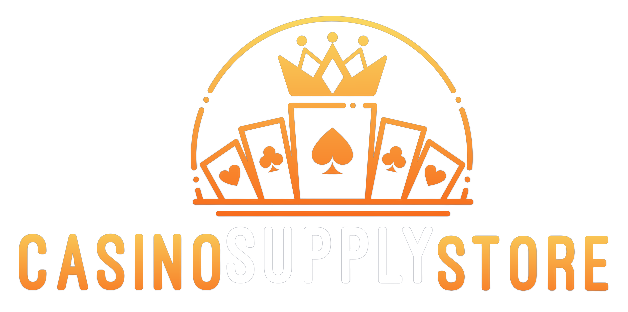
When it comes to gambling, managing your bankroll effectively is crucial for long-term success.
Without a proper bankroll management strategy, you risk losing all your funds and potentially experiencing financial hardships.
By implementing sound practices, you can protect your bankroll and maximize your chances of winning. Here are the key aspects of effective bankroll management you need to know.
Understanding your financial situation
Before you start gambling, it’s essential to have a clear understanding of your financial situation.
Take a close look at your income, expenses, and overall financial stability. Determine how much money you can comfortably afford to lose without it affecting your daily life or causing any financial stress.
This figure will serve as the foundation of your gambling budget.
Setting a gambling budget
Once you have assessed your financial situation, it’s time to set a gambling budget.
This budget should be separate from your regular expenses and strictly dedicated to gambling activities.
Set a specific amount of money that you are willing to allocate to your gambling endeavors. It’s crucial to stick to this budget religiously and avoid any temptation to exceed it, even if you are on a winning streak.
When setting your gambling budget, consider how frequently you plan to gamble. If you’re a casual gambler, a smaller budget may be sufficient.
However, if you’re a more serious player, you may want to allocate a larger sum. Remember, the key is to only gamble with money you can afford to lose.
Determining your betting unit size
Once you have your gambling budget in place, it’s important to determine your betting unit size.
This refers to the amount of money you will wager on each bet. The size of your unit should be a percentage of your overall bankroll.
A commonly recommended unit size is 1-2% of your total bankroll, but this can vary based on your risk tolerance.
(Read More: Basic Casino Strategies to Improve Your Chances of Winning)
By betting a percentage of your bankroll rather than a fixed amount, you ensure that your bets are proportional to the size of your bankroll.
This approach helps to protect your funds and prevents you from placing too much money on a single wager.
Bankroll Management Strategies: Conservative, Aggressive, and Balanced Approaches
When it comes to managing your bankroll, there are three main strategies you can consider: conservative, aggressive, and balanced approaches.
The conservative approach involves making smaller bets and taking fewer risks. This strategy is suitable for players who prefer a slow and steady approach, prioritizing the preservation of their bankroll over large wins.
The aggressive approach, on the other hand, involves making larger bets and taking more risks. This strategy is for players who are willing to take bigger chances in exchange for the potential of significant winnings. However, it’s important to note that this approach can also lead to faster losses if luck is not on your side.
The balanced approach seeks to strike a middle ground between conservative and aggressive strategies. With this approach, you make moderate bets and take calculated risks. It allows for a mix of small wins and the occasional larger payout, providing a balanced gambling experience.
Choosing the right bankroll management strategy depends on your personal preferences, risk tolerance, and gambling goals. It’s crucial to find the approach that aligns with your individual style of play.
Tracking your wins and losses
To effectively manage your bankroll, it’s essential to keep track of your wins and losses. By recording your gambling activities, you gain valuable insights into your performance and can make informed decisions moving forward.
Tracking your wins and losses also helps you identify any patterns or trends that may impact your overall profitability.
There are various methods you can use to track your gambling activities.
Some players prefer to use spreadsheets or dedicated bankroll management software, while others opt for traditional pen and paper.
Whichever method you choose, make sure to log every bet, including the amount wagered, the outcome, and the date.
This record will serve as a valuable tool for evaluating your progress and making adjustments to your strategy.
Setting win and loss limits
Another crucial aspect of bankroll management is setting win and loss limits.
These limits help you maintain control over your gambling activities and prevent you from chasing losses or getting carried away with winnings.
A win limit is the point at which you decide to stop gambling after reaching a certain profit threshold. Setting a win limit ensures that you lock in your winnings instead of risking them all back on subsequent bets.
It’s important to be disciplined and stick to your win limit, even if you feel like you’re on a winning streak.
Similarly, a loss limit is the point at which you stop gambling after reaching a specific loss threshold. By setting a loss limit, you protect your bankroll from significant depletion and avoid chasing losses in an attempt to recoup your money.
It’s crucial to have the discipline to stop gambling once you’ve hit your loss limit, even if you believe your luck is about to turn around.
Managing emotions and avoiding chasing losses
Emotions play a significant role in gambling, and it’s important to manage them effectively to protect your bankroll.
It’s natural to experience highs and lows during your gambling sessions, but allowing emotions to dictate your actions can lead to poor decision-making.
One common emotional trap is chasing losses. When you’re on a losing streak, it can be tempting to increase your bets in an attempt to recover your losses quickly.
However, this approach often leads to even bigger losses and can quickly deplete your bankroll. It’s crucial to stay disciplined and stick to your predetermined bankroll management strategy, regardless of whether you’re winning or losing.
Using bankroll management tools and software
In today’s digital age, there are numerous bankroll management tools and software available to help you track and manage your funds effectively.
These tools provide advanced features such as real-time tracking, performance analysis, and customizable alerts.
Some popular bankroll management tools include spreadsheets like Microsoft Excel or Google Sheets, as well as dedicated software specifically designed for gamblers.
These tools can automate calculations, generate reports, and provide valuable insights into your gambling activities. By utilizing such tools, you can save time and effort while ensuring accurate recordkeeping.
Final Tips
Effective bankroll management is a crucial aspect of successful gambling. By setting a gambling budget, determining your betting unit size, and adopting a suitable bankroll management strategy, you can protect your funds and increase your chances of winning.
It’s also important to track your wins and losses, set win and loss limits, manage your emotions, and utilize bankroll management tools and software for optimal results.
Remember, gambling should be an enjoyable activity, and managing your bankroll effectively allows you to enjoy it responsibly.
By implementing these tips and strategies, you can take control of your bankroll and make the most of your gambling experience. Good luck and gamble responsibly!








[…] (Read More How to Manage Your Bankroll Effectively When Gambling ) […]